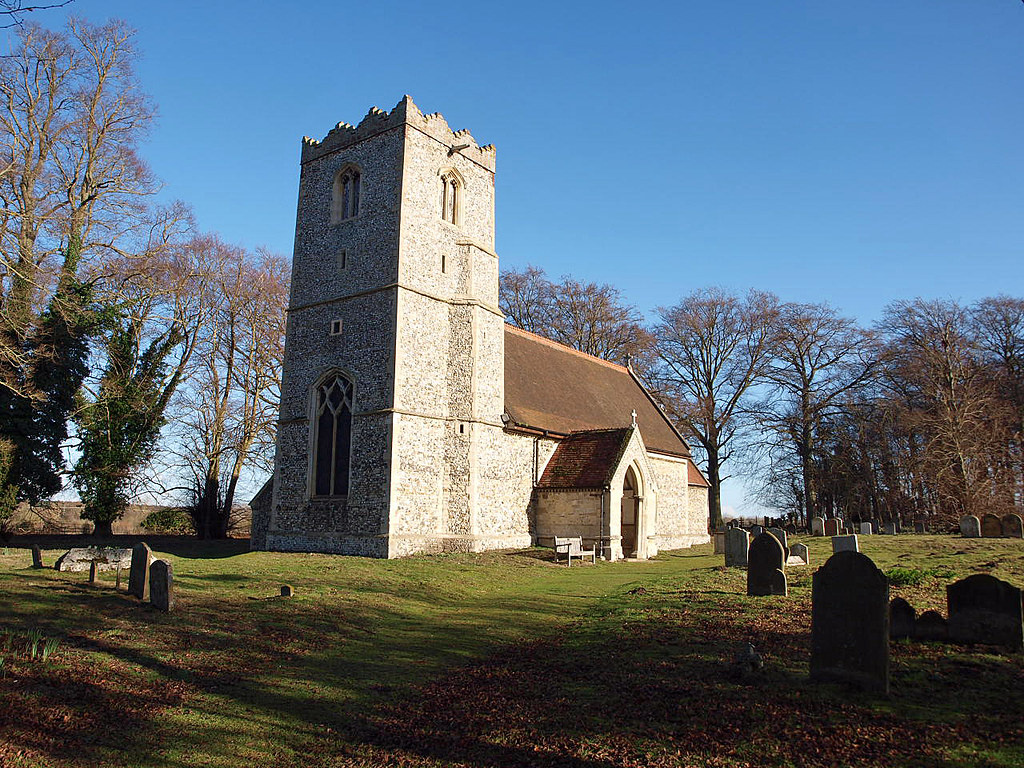ST LAWRENCE. Over-restored Dec W tower with C16 brick battlements. Dec nave (one window shafted inside, simple doorway); Dec chancel with SEDILIA and a tomb recess opposite, nicely decorated; Dec N aisle and N chapel. The aisle arcade is original, with its quatrefoil piers, or rather circular piers with four broad semicircular attachments, and its double-chamfered arches. The leaf capitals in the chapel are also original. But the aisle was later pulled down and rebuilt with rather minimum windows in the C19. Handsome large shafted and gabled squint from the aisle in the chancel; it contains a PISCINA in the aisle. - FONT. Octagonal, late C13, with big stiff-leaf motifs, but also rose, ivy, etc. - BENCH ENDS. With poppy-heads; made up into one long seat along the N aisle. - STAINED GLASS. E window by Powell (designed by Holiday), 1871.
LACKFORD. A little place by the River Lark, it has a small church in the fields half a mile away. The Normans began the building of it, and later centuries added their share, the chancel being 13th century and the tower 14th, with a 15th century parapet; it has pinnacles and battlements, and there are wooden shutters in the top storey. The walls of the tower are amazing, being a yard thick, and its lofty arch is shaped like a lancet. The 13th century men gave the chancel an unusual arcade. On one side it runs over a rough stone seat and an Easter sepulchre, and on the other it forms the canopies of the sedilia and the piscina. The porch and nave are 14th century, and four lovely arches mark olf a modern aisle. There is a coffin lid with a floral cross, a canopied peephole, and a 600-year-old font.
Not far away is a place where our distant ancestors buried their dead. We have seen Anglo-Saxon urns from it at Bury St Edmunds.

No comments:
Post a Comment